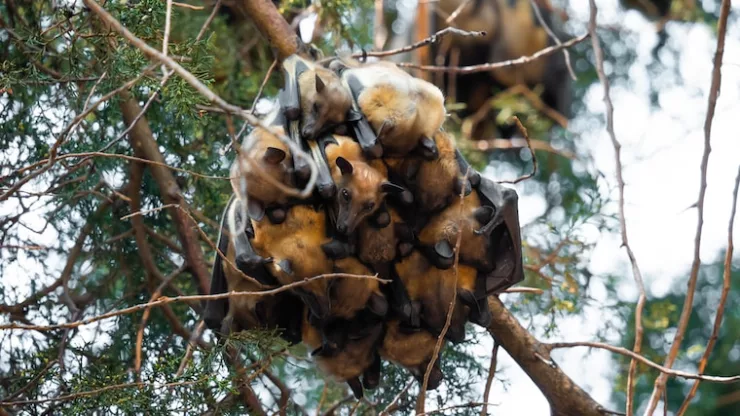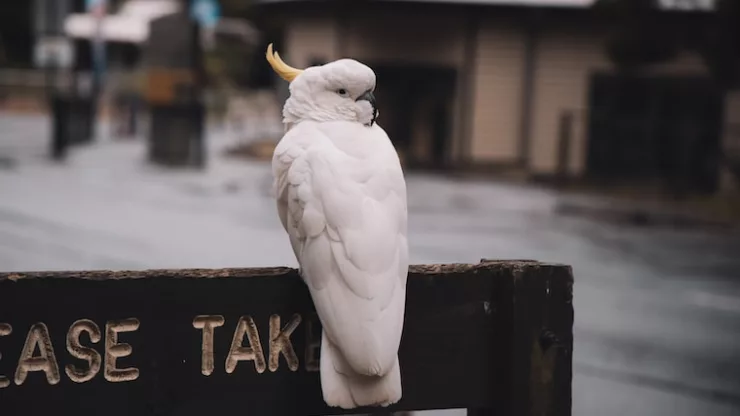Facts About Fruit Bats
Fruit bats, also known as megabats or flying foxes, are fascinating creatures that play a crucial role in pollination and seed dispersal in tropical ecosystems.
Here are some fun and interesting facts about these winged mammals:
- Fruit bats are the largest bats in the world, with some species having a wingspan of up to 5.5 feet.
- Fruit bats are called megabats because they are larger than most other bat species.
- Fruit bats are known for their excellent eyesight and sense of smell, which helps them locate their favorite fruits.
- Fruit bats have a long tongue that they use to extract nectar from flowers.
- Fruit bats have sharp teeth that they use to tear apart fruits and flowers.
- Fruit bats are important pollinators of many plant species, including durian, mango, and banana.
- Fruit bats can consume up to twice their body weight in fruits every night.
- Fruit bats are nocturnal animals, meaning they are active at night.
- Fruit bats are social creatures and often live in large groups called colonies.
- Fruit bats roost in trees during the day and fly out at night to forage for food.
- Fruit bats are found in tropical and subtropical regions of the world.
- Fruit bats have a keen sense of hearing, which they use to navigate in the dark.
- Fruit bats are not blind, and they can see in the dark using their highly sensitive eyes.
- Fruit bats are not dangerous to humans, and they do not attack people.
- Fruit bats are not vampires, and they do not drink blood.
- Fruit bats are important for maintaining the balance of the ecosystem, as they help to disperse seeds and pollinate plants.
- Fruit bats are threatened by habitat loss, hunting, and disease.
- Fruit bat populations are declining in many parts of the world, and some species are endangered.
- Fruit bats can live for up to 20 years in the wild.
- Fruit bats have a unique way of communicating with each other, using vocalizations and body language.
- Fruit bats have a critical role in many traditional cultures, where they are considered to be a symbol of fertility and good luck.
- Fruit bats are fascinating animals that deserve our attention and protection.
FAQ
Frequently Asked Questions
What do fruit bats eat?
Fruit bats primarily eat fruits and nectar from flowers.
Some species also consume leaves, pollen, and insects.
Are fruit bats dangerous?
Fruit bats are not dangerous to humans, and they do not attack people.
However, they can carry diseases that can be transmitted to humans, such as the Nipah virus.
Where do fruit bats live?
Fruit bats are found in tropical and subtropical regions of the world, including Asia, Africa, Australia, and the Pacific Islands.
How do fruit bats navigate in the dark?
Fruit bats have a keen sense of hearing and use echolocation to navigate in the dark.
They emit high-pitched sounds that bounce off objects, allowing them to locate their prey and avoid obstacles.
What is the role of fruit bats in the ecosystem?
Fruit bats play a crucial role in pollination and seed dispersal in tropical ecosystems.
They help to maintain the balance of the ecosystem by spreading seeds and pollinating plants.
Why are fruit bats endangered?
Fruit bats are threatened by habitat loss, hunting, and disease. Their populations are declining in many parts of the world, and some species are endangered.

I am a fun fact enthusiast and creator of Facts On Tap.
I love to share my knowledge and curiosity with readers and inspire them to learn something new every day.
When I’m not writing, I enjoy traveling, reading, and playing trivia games with my friends.




